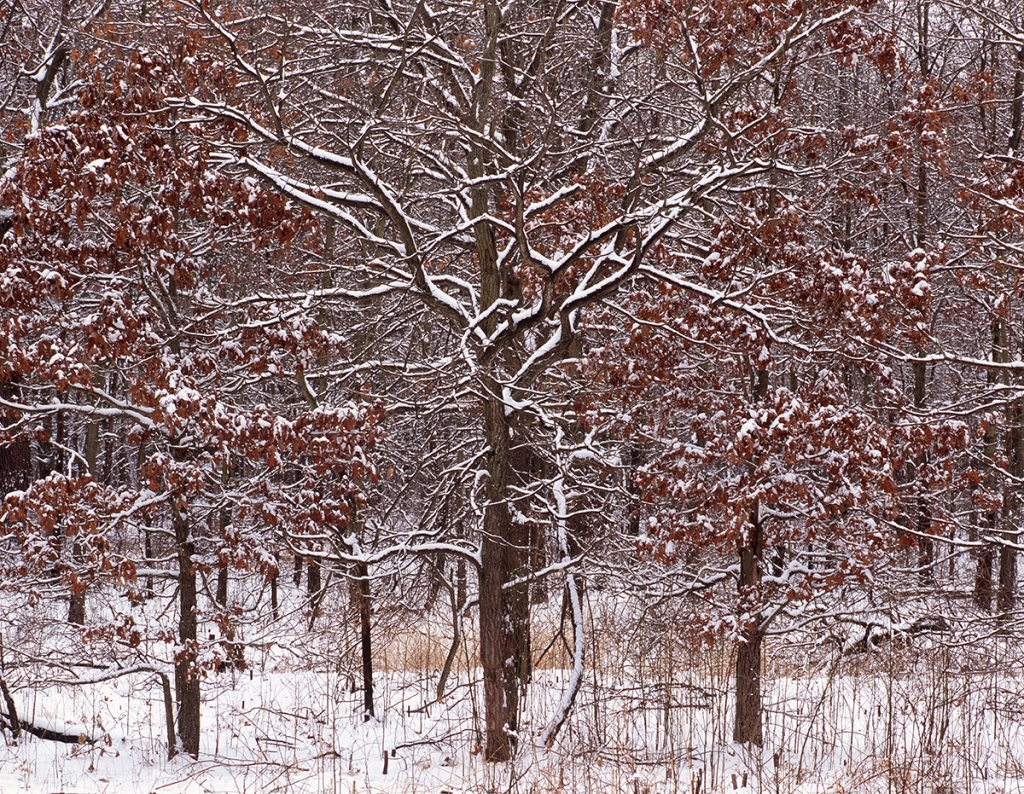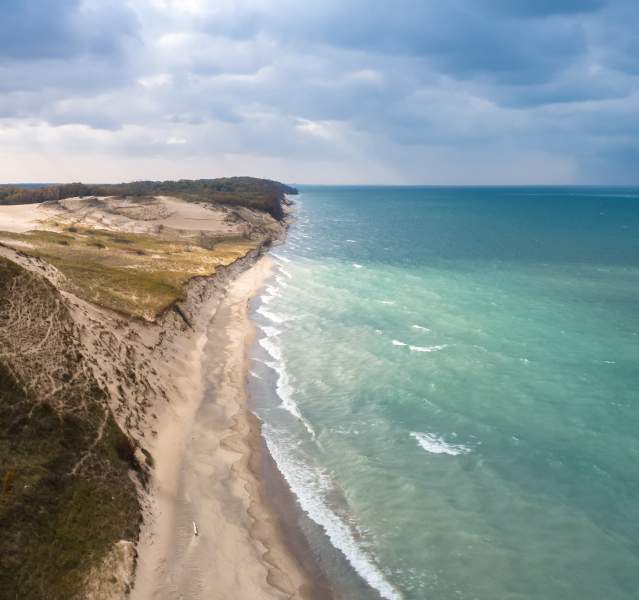Savannas: Beauty in the Making
By Alyssa Nyberg
A hike through a savanna any time of the year will have its “oh-wow, I feel so happy moments”: in the spring, when wildflower displays are stunning with the purple show of the wild lupines, pink of the phloxes, the blues of the violets and the song of the migratory songbirds filling the air; summer is a shady stroll through the blueberry and fern-filled fairyland, and fall is a time to enjoy the changing leaves of the oaks and the sassafras, and the snort of a white-tailed deer.
And in the winter, snow will decorate tree branches while red-headed woodpeckers and wild turkeys search for acorns to eat.
But such beautiful savannas don’t come easy. One of the most beneficial things, but sometimes the hardest thing, one can do to help manage a savanna is to cut down young trees and invasive shrubs.
 Kankakee Sands Restoration Technicians ready for a day’s work - Jessica Gomez.
Kankakee Sands Restoration Technicians ready for a day’s work - Jessica Gomez.
Cut down a tree, you say?! How could we?
Exactly. Trees are wonderful indeed, especially the majestic oaks: white oaks, black oaks, and pin oaks. They provide food for wildlife in the form of nuts and leaves, and especially for the birds in the way of the insects they harbor. Trees also provide shade and help to sequester carbon, too.
But too much of something can be a bad thing, and that is, unfortunately, the case in many of our savannas and especially at Conrad Station Savanna. Over time, due to a lack of prescribed fire, non-native honeysuckle, and native sassafras and cherry saplings have gotten established, upsetting the balance and shading the other plants that call a savanna home.
The term “savanna” refers to a structure of a habitat in which there are few trees, as few as one tree per acre, surrounded by low growing grasses and wildflowers. Savannas are the interface between prairies and woodlands, and as such, they are often the most biologically diverse systems having more species than a grassland or a woodland.
In fact, there are even species that depend exclusively on savanna habitats for their survival such as the Persius duskywing butterflies (Erynnis persius) which lay their eggs only on wild lupine, the host plant for the Persius duskywing caterpillar.
To help savanna-loving creatures like the duskywing, this winter our staff is gearing up to remove more than 16,000 saplings, which will greatly reduce the amount of shade and in turn, increase the amount of sunshine. Staff will be using brush cutters and chainsaws to cut the saplings and small trees at the base, then apply a small amount of herbicide to the cut stem to prevent them from resprouting in the spring. Some cut stems will remain on the ground, and others will be stacked and burned in small brush piles to clear the areas for walking and for treating any non-invasive plants the following year.
When that warm sunshine hits the ground in the spring, it can be like magic - a wealth of wildflowers will likely arise where once a grove of sassafras once grew. These many wildflowers will provide nectar and pollen to bees and butterflies; food for turtles, rabbits, and deer; and a space for you and me to hike, and dream!
If you have trees and or shrubs on your property that you think you might like to remove but aren’t sure where to start, feel free to reach out to us or to our local Newton County Soil and Water office and we can put you in touch with folks that can offer advice for free.
Together we can reinvigorate the savannas and woodlots of Newton County, creating more beautiful places for nature and people to thrive.
 A dusting of snow covers the trees at Conrad Station Savanna Nature Preserve, Indiana - Christopher Jordan
A dusting of snow covers the trees at Conrad Station Savanna Nature Preserve, Indiana - Christopher Jordan
To our seasonal staff, and the many land stewards and landowners that brave the cold weather and work in the winter months to remove trees and invasive shrubs, may your blades be sharp, your fuel cans full, and your sprayer nozzles unfrozen. We look forward to many fruits of the hard labor that you are doing this winter. Thank you!
Visit Conrad Station Savanna this winter to see the work in progress, and be sure to visit in the spring to enjoy the beauty that is in the making this winter.
The Nature Conservancy’s Kankakee Sands is an 8,300-acre prairie and savanna habitat in Northwest Indiana, open every day of the year for public enjoyment. For more information about Kankakee Sands, visit www.nature.org/KankakeeSands or call the office at 219-285-2184.
Photo credit: Jessica Gomez and Christopher Jordan


